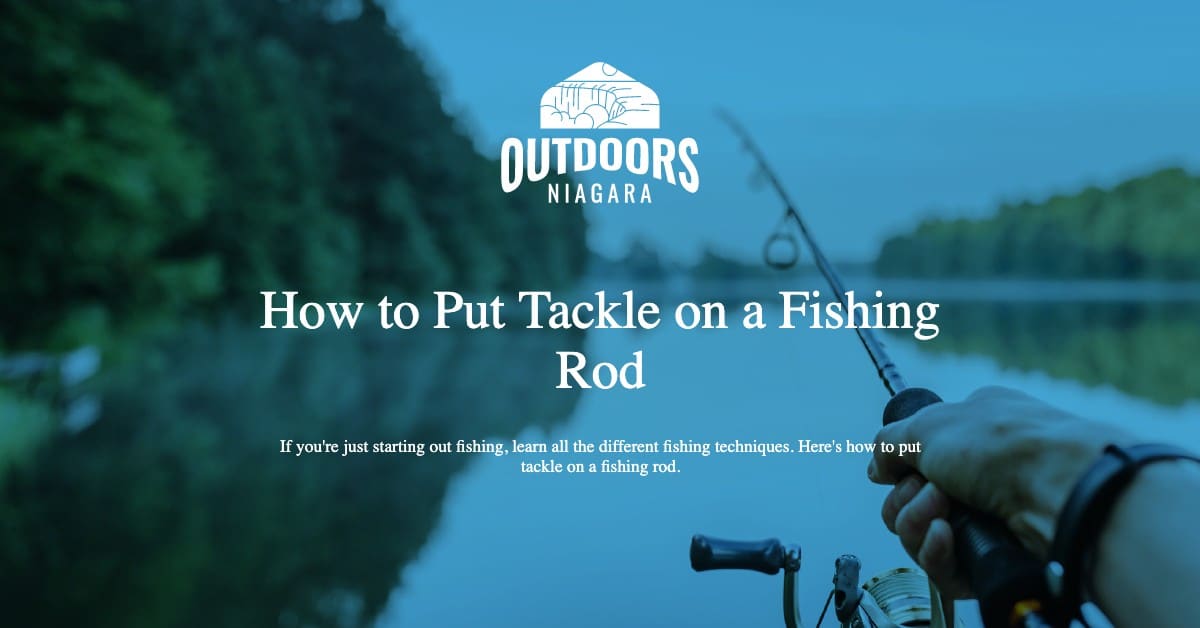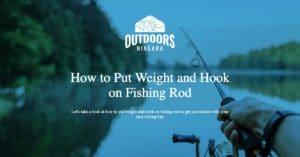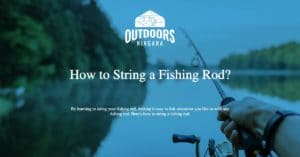If you’re just starting out fishing, you might think you need to focus on all the different fishing techniques.
But maybe one of the scariest prospects is the actual setup that comes with the fishing pole.
This is the first thing you have to do, and there are several steps that need to be done to ensure your fishing pole is set up correctly and ready for a successful fishing excursion.
So we’re going to take a look at how to put tackle on a fishing rod and a quick explanation at what exactly you need when it comes to fishing tackle.
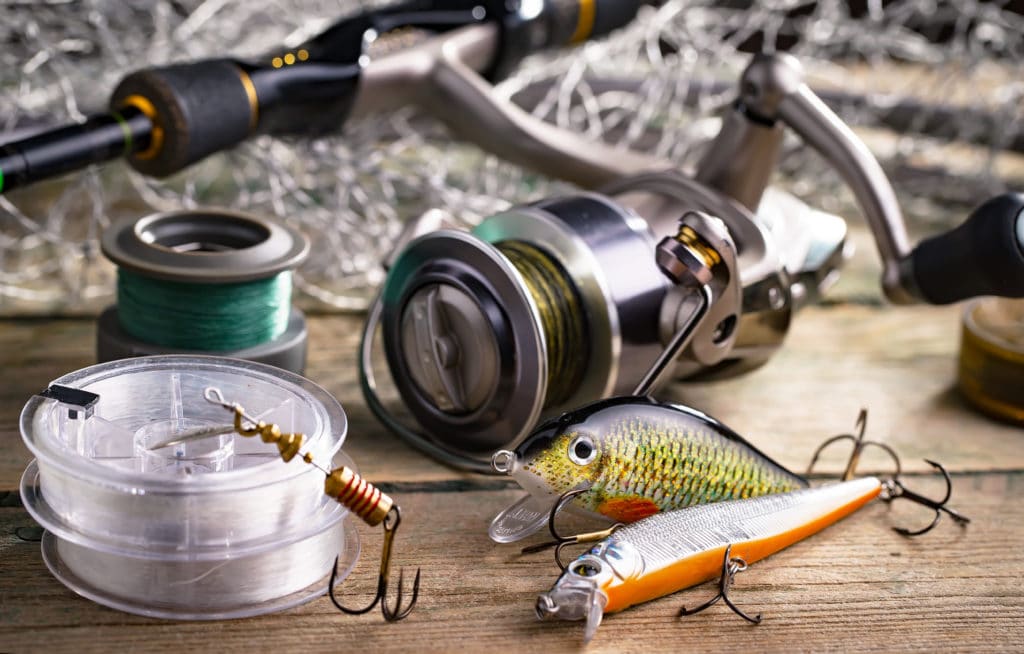
Contents
Tackle for Fishing You Need
Before you can even understand how to set up the tackle on your fishing rod, you need to understand the fishing items needed.
This means understanding everything from fishing sinkers to the type of bait to a rod type.
Here is a quick fishing manual to outline the tackle and tools you need before beginning to set up your fishing rod.
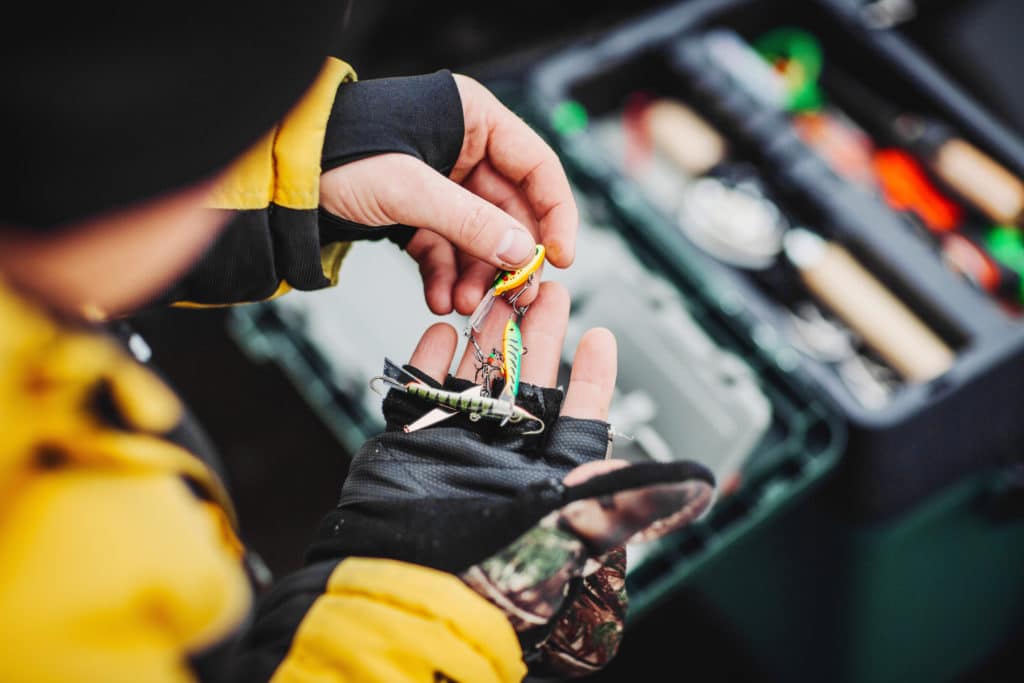
Fishing Rod
The fishing rod is the core piece needed to get started. These are slim poles that you attach reels and line to in order to cast and catch your fish.
There are many different types of rods, including fly-fishing rods as well as freshwater fishing rods.
You need to choose one according to where you want to fish. (Of course, you also have to decide between a one-piece or multi-piece rod.)
Fishing Reel
The next most important is, of course, the fishing reel. Many rods will come with this already attached, but there are options for you to customize your choice.
Choosing a reel depends on where you’re going to be fishing.
For instance, if you are saltwater fishing, the reel needs to be able to withstand the harsh saltwater, but if you are freshwater fishing, it can be less durable.
Fishing Line
Fishing lines are the lines fed through the reel and the eyes of the rod that hold the fishing hook when cast into the water.
When first getting started, you’ll want to utilize an easy line that gives you a lot of control.
Most of the time, experienced anglers will look at fishing lines according to their durability, material, and weight.
These fishing lines tend to be crafted using nylon, silk, or other polymers.
Bait/Lure
You want to invest in some lures or choose your bait according to the type of fish and where you’re fishing spot is.
These are the tools that wind up in the water and are responsible for attracting the fish to your line.
There are artificial baits as well as natural baits and a wide range of fishing lures to choose from.
In this regard, you may want to ask for assistance in choosing the right ones for your fishing needs. This can be done at a fishing shop.
Scissors
Scissors may seem like a strange piece of tackle for someone to have to invest in, but they are crucial.
These tools will be used to cut fish loose, measure out lines, and do many other activities during your fishing excursions.
Setting Up Your Pole
Now that you have a list of all the fishing items that can be found at tackle shops easily and are necessary to set up your pole, we can take a detailed look at the steps necessary to set up your tackle on your fishing rod.
Let’s get started!
Clean & Assemble Rod
Prior to the actual fishing pole setup process, one step has to be done.
You want to take a damp cloth or a wipe and clean the rod thoroughly.
This will get rid of any pollutants or dirt left from where the pole has been stored and will make attaching some of the tackle to your fishing rod easier.
Along with that, it will also help get rid of any unwanted odors from being in storage.
Once you have cleaned the rod, you can begin setting up the fishing pole.
This will depend on the type of pole you have chosen to invest in.
If you have invested in a single-piece rod, there will be no assembly.
However, most people go for a multi-piece fishing pole, which comes with a little bit of assembly required.
Each of the parts will have a ferrule that you can screw one piece into the other.
You want to do this carefully and not force it; otherwise, you may damage the rod, which will hinder the rest of the fishing pole setup process.
Attach Reel
You won’t have to take this step if you’ve chosen a fishing pole set up already with a reel.
However, it may be more beneficial and offer better performance if you choose a reel according to your fishing style.
In order to attach the reel, you’re going to look at the bottom section of the fishing pole, where you’ll see that there is a space for the reel.
Then take your reel and slowly push that into that space. It should be a quick fix to insert the reel split into that as long as there is no damage to the rod itself.
You now need to tighten it but do this slowly but firmly.
Make sure not to tighten it too much as you don’t want anything to be damaged, either the reel or the rod.
Threading the Pole
After you have attached the reel to the rod, you can begin threading the pole.
Take your fishing line, whether that be a braided fishing line or a 100-pound fishing line, and start by attaching the line to the reel and tightening it.
After you lock the thread into the reel, you can begin pulling the thread through the eyes of the rod.
You first need to lift the bailing arm and then guide the line through the eyes of the fishing rod.
Once you have the appropriate amount through, you can close the bail arm and continue to the next step.
Bait Choices
After you have that setup, the next step to assembling your rod is choosing the type of bait.
If you are an inexperienced angler, you may wonder what bait to use.
After all, there is natural bait, artificial bait, and bait designed explicitly for particular fish (for instance, there is specific bait for trout).
But you have to be able to understand how to do this.
You may choose bait depending on the weather, color, fishing environment, or even a particular type of fishing, as well as the fishing rigs you are choosing to utilize.
Lures
If you choose to utilize lures, you will need to thread the line through that bait lure. Utilizing bait lures can elevate your fishing game.
Of course, to do this, you have to understand fishing knots as well as the prey.
You want to ensure that the line is threaded securely and adequately to the lure.
Make sure the blades of the fishing lures are able to move freely and not be constrained in movement.
Sinkers
Next up, you’re going to want to add fishing sinkers.
There are different types of sinkers that you can use, including the 1-2 split shot sinkers.
The sinker will be added to the line in order to help add a bit of weight to slow down your bait so that the fish can catch up to it.
Sinkers are particularly used only when not using bait lures.
If you’ve reached this point and are not using bait lures, you should either choose to go with a single or more.
However, the more fishing sinkers you use, the further your bait will go, which may be perfect for those doing deep water fishing.
Final Thoughts
Setting up your fishing pole is about setting up your fishing reel and rod, choosing the types of bait, and selecting the fishing line or even the type of grip that fits your fishing style best.
We hope you are more confident in your fishing game after looking at the fishing pole setup.

